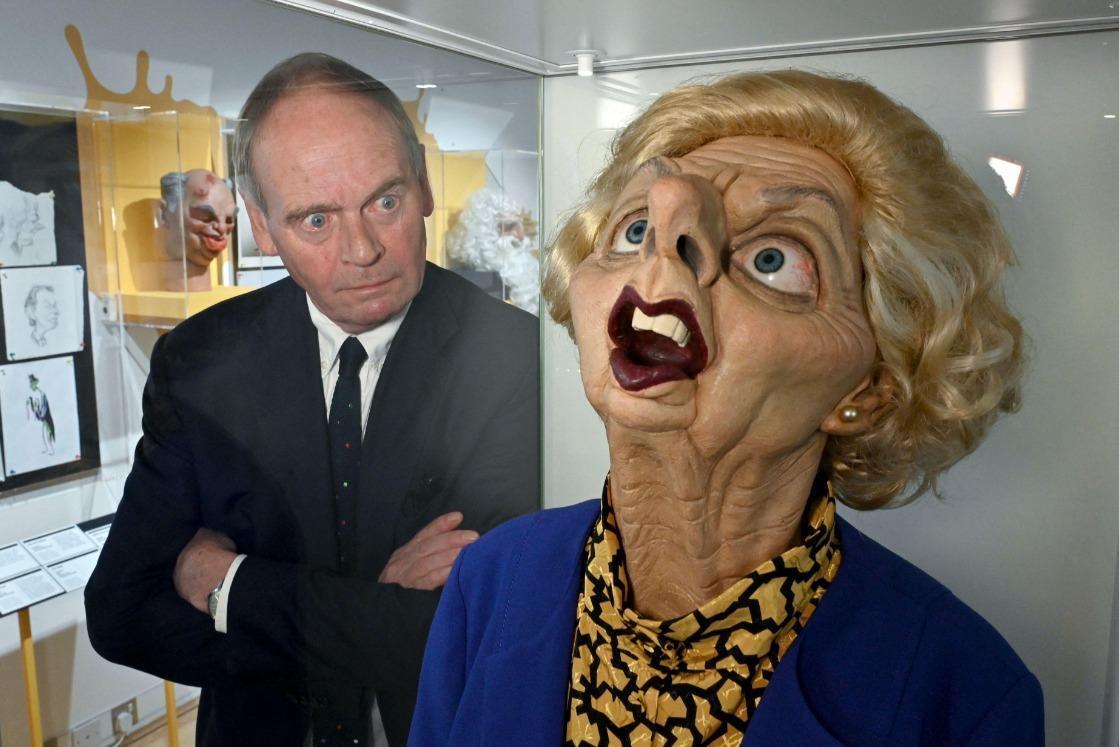UK satire 'Spitting Image' celebrated in new exhibition
LONDON

Margaret Thatcher wore a man's suit and smoked a cigar, Ronald Reagan was a liability who came close to causing nuclear war while Queen Elizabeth II's mother slugged from a half-empty gin bottle.
At the height of its 1980s popularity, British satirical television program "Spitting Image" pulled in 15 million viewers each week.
Now, nearly 40 years after it first aired, puppets of some of its best-known targets including Thatcher, Soviet leader Mikhail Gorbachev and Princess Diana have gone on display at an exhibition in Cambridge.
Created by British caricaturists Peter Fluck and Roger Law, Spitting Image was merciless in its depiction of the leading public figures of the day.
Producer John Lloyd said he had been determined to work on the show as soon as he heard about it and immediately got in contact.
Spitting Image quickly became a roaring success, with people from all walks of life tuning in every Sunday evening.
One of the show's most famous puppets was of former prime minister John Major, leading a terminally dull life, including one sketch showing him eating peas with his wife, Norma.
Major's predecessor Thatcher was rumored not to be particularly interested in her own long-running portrayal. She was routinely depicted as an all-powerful woman surrounded by weak and bumbling male ministers.
The exhibition, which opened on Sept. 30 at Cambridge University Library, also includes original scripts, sketches and letters of complaint received during the program's 12-year run.
In one letter, politician David Steel objected to the way the show had his puppet "gazing up adoringly" at political ally David Owen and calling him "dear."
Norman Tebbit, one of Thatcher's most loyal and favored ministers, however, was very happy with his leather-clad, knuckleduster-wielding puppet.
"He found it very funny. It made him a working class hero," Lloyd said.
Exhibition curator Chris Burgess said the show had managed to "combine the political with the everyday, the anarchic, the surreal, the ridiculous. "It is the most popular satire that's ever been produced," he said.
For Lloyd much of the program's success lay in Fluck and Law's ability to take someone that everyone else saw as ordinary in appearance and "just to catch the way the nose is or a little look in the eye.
"Suddenly you can never take them seriously again."
The program was often accused of going over the top, but Lloyd said this so-called cruelty really boiled down to playground insults and a universal sensitivity about physical appearance.
"There's an odd thing about politicians, you can say, you cheated on your tax returns, you had affairs with 15 people... but say you have big ears and it's 'that's really unfair'," he said.
















